As the team behind WPBeginner, we often get asked: “How can I show my Medium posts on my WordPress site?” It’s a great question, especially since Medium has become such a popular platform for writers and businesses alike.
While we primarily publish on WordPress, we’ve guided numerous clients through the process of embedding Medium content on their sites. After extensive testing and research, we’ve discovered several reliable methods that don’t require any coding knowledge.
Today, we’ll share these proven techniques with you, showing you exactly how to embed your Medium posts on WordPress in just a few clicks.
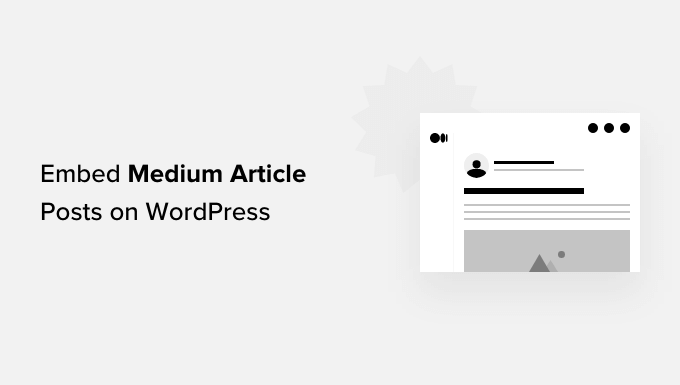
Why Embed Medium Article Posts in WordPress?
Medium is a popular blogging platform that allows you to easily publish articles online.
However, one downside of using Medium is that it doesn’t give you the same flexibility as a WordPress website.
For example, Medium doesn’t have as many customization options as WordPress when it comes to website design, which can be a concern if you are a professional blogger.
For this reason, you may want to embed your Medium articles on WordPress. You can then use WordPress to make any type of website and monetize your content any way you see fit.
For more details, see our article on why you should use WordPress to make your website and our comparison article about WordPress vs Medium.
How to Embed Medium Blog Posts in WordPress
Normally, WordPress uses the oEmbed format to embed third-party content from supported websites like YouTube, Twitter, and more.
Unfortunately, Medium doesn’t support the oEmbed format, which makes it difficult to embed Medium articles in WordPress.
There used to be plugins that allowed users to display their Medium articles on a WordPress blog, but they either don’t work or are no longer maintained due to low demand.
So now, the only way to display Medium posts in WordPress is by using the RSS block or widget.
First, you need to find your Medium publication’s RSS feed. Usually, it is located at a URL like this:
https://medium.com/feed/your-publication-name
If you are using a custom domain for your Medium publication, then your RSS feed will be located at:
https://your-domain.com/feed
Next, you need to edit the WordPress post or page where you want to embed Medium posts. Then, click the ‘+’ block anywhere on the page and select the ‘RSS’ block.
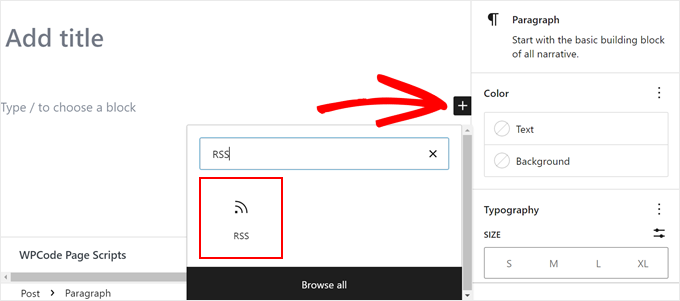
After that, add your Medium RSS feed URL in the block settings.
WordPress will then fetch your recent Medium articles and display them.
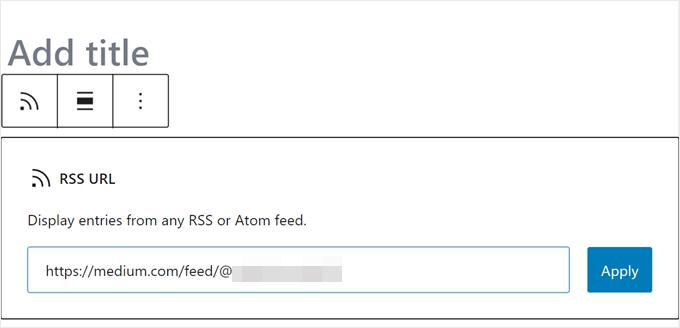
Under the block settings, you can choose to show an excerpt, featured image, author, and date options.
After that, just click Save, Publish, or Update.
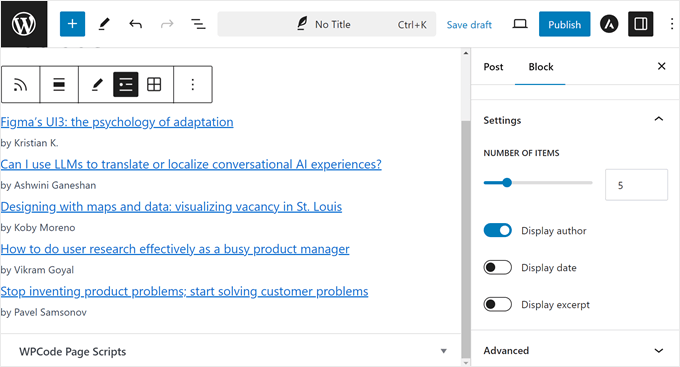
The problem with this method is that you can’t embed a specific Medium article by itself. The block will automatically show you the latest Medium posts only.
If you would like more flexibility and freedom, then perhaps you should consider migrating your Medium articles to WordPress.
How to Migrate Medium Articles to WordPress
Migrating your Medium articles to WordPress would allow you to take advantage of all the flexibility and features of WordPress.
WordPress is the most popular website builder on the market, powering more than 43% of all websites on the internet.
If you want to migrate your Medium articles to WordPress, you can follow the steps below. Feel free to use these quick links to skip to a specific method:
- Step 1: Set Up Your WordPress Website
- Step 2: Import Your Medium Articles to WordPress
- Step 3: Import Images From Medium to WordPress
- Step 4: Set Up Redirects for Medium Articles
- Step 5: Decide What to Do With Your Medium Articles
Step 1: Set Up Your WordPress Website
If you haven’t already done so, you’ll need to set up a WordPress website first.
There are two types of WordPress websites: WordPress.com, which is a blogging platform, and WordPress.org, which is also called self-hosted WordPress.
For more details, see our article on the difference between WordPress.com vs. WordPress.org.
We recommend using WordPress.org as it gives you complete freedom to build your website however you choose.
To get started, you’ll need a domain name and a WordPress hosting account.
Fortunately, Bluehost has agreed to offer WPBeginner users a free domain name and a generous discount on hosting. Basically, you can get started for $1.99 per month.
After signing up, Bluehost will send the login details to your email address.
Once you’ve logged in to the Bluehost dashboard, you can go to the ‘Websites’ tab. You’ll notice that Bluehost has already installed WordPress for you.
Simply click the ‘Edit Site’ button to log in to your new WordPress dashboard.
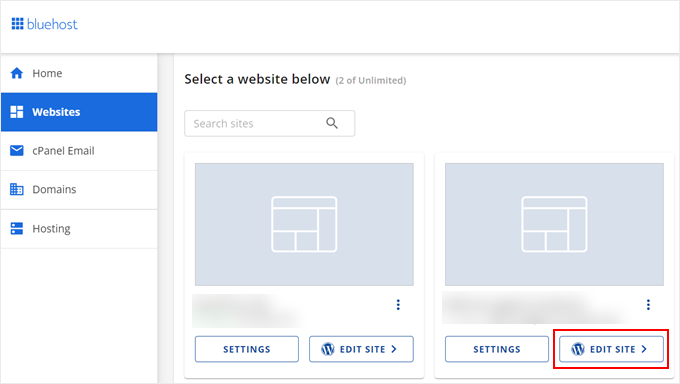
For a step-by-step guide, you can read our article on how to create a WordPress website.
Step 2: Import Your Medium Articles to WordPress
Before importing your Medium articles to WordPress, you’ll need them in the format supported by WordPress.
Medium doesn’t provide a tool to do that by default. But it does allow you to export your content in an unsupported format.
Simply log in to your Medium account and click on your profile photo. From here, click on the ‘Settings’ link.
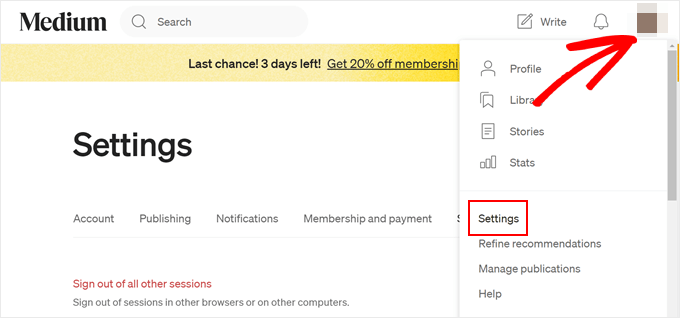
This will take you to the settings page, where you must navigate to the ‘Security and apps’ tab.
Click the ‘Download your information’ button to export your Medium data.
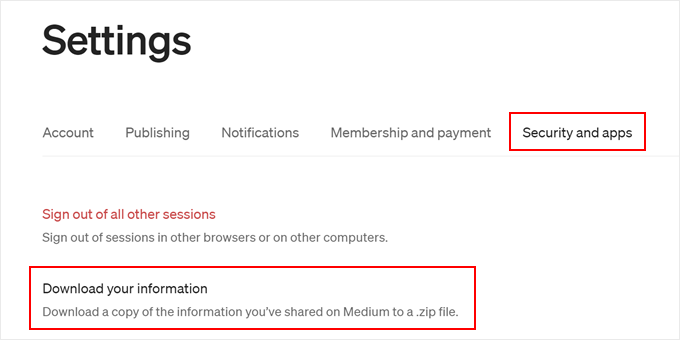
A pop-up will appear, asking you to click the ‘Export’ button.
Medium will then prepare your download and send a link to you via email.
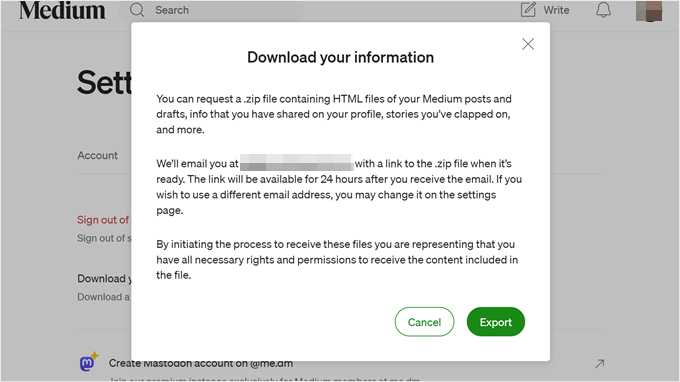
After you’ve downloaded the export file, you need to visit the Medium to WordPress Importer tool. This free online tool converts your Medium export file into a WordPress-compatible format.
First, you need to provide your Medium profile URL, your name, and your email address.
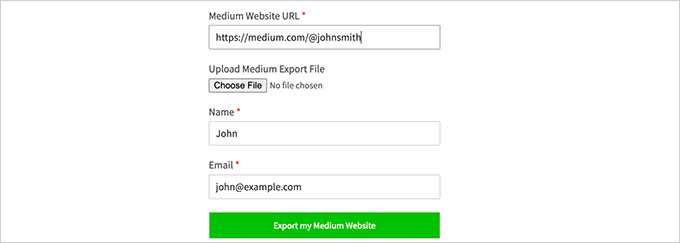
If your blog is using a custom domain on Medium, then you need to enter your custom domain URL.
Now, if you are using your Medium profile URL, then you’ll be asked to upload the Medium export file you downloaded in the earlier step.
Next, click on the ‘Export My Medium Website’ button to continue.
The Medium to WordPress Importer will now prepare your export file. Once finished, it will show you a success message with a button to download your WordPress-ready Medium export file.
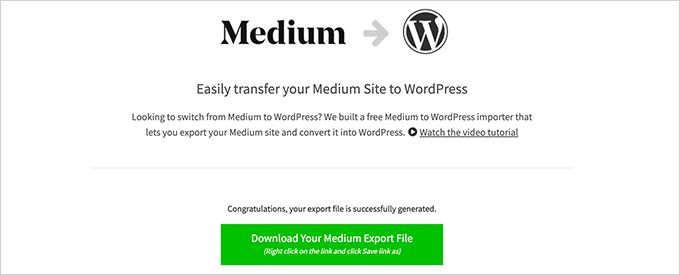
You can now download the file to your computer.
📝 Note: If you have trouble with the Medium to WordPress importer, you can reach out to our support team using this contact form.
After that, switch to your WordPress website and go to the Tools » Import page.
You will see a list of importers available for different platforms. You need to scroll down to WordPress and then click on the ‘Install Now’ link.
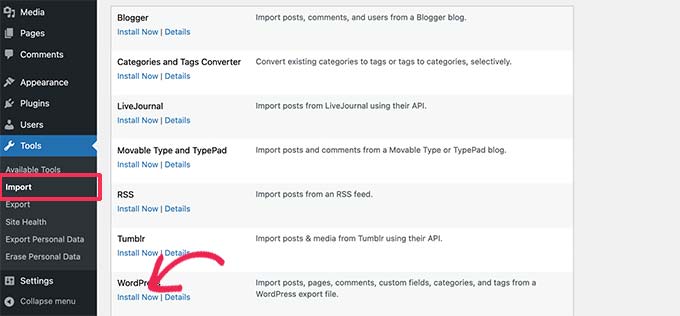
WordPress will now fetch and install the importer plugin.
Once finished, you need to click on ‘Run Importer’ to launch it.
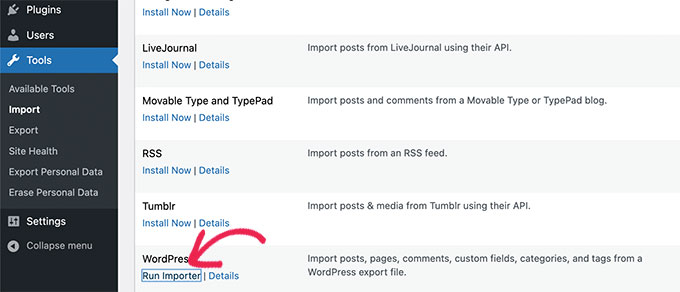
On the next screen, click on the ‘Upload file and import’ button to continue.
The WordPress importer will now upload your Medium export file and analyze it.

On the next screen, it will ask you to assign authors.
You can import the author from your Medium website, create a new author, or assign all content to your existing WordPress user.
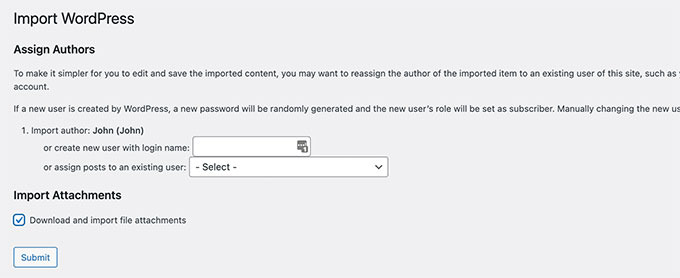
Don’t forget to check the box next to the ‘Download and import file attachments’ option. It will attempt to get images from your Medium website into your WordPress media library.
You can now click on the ‘Submit’ button to run the importer. Upon completion, you will see a success message.

Congratulations, you have successfully imported Medium content to WordPress!
You can now go to the posts page in your WordPress admin panel to double-check if all your content is there.
Step 3: Import Images From Medium to WordPress
The WordPress importer tries to import images from your Medium articles to the WordPress media library. However, sometimes it may fail due to the way Medium displays images in your articles.
To see if all the images are imported successfully, simply go to the Media » Library page.
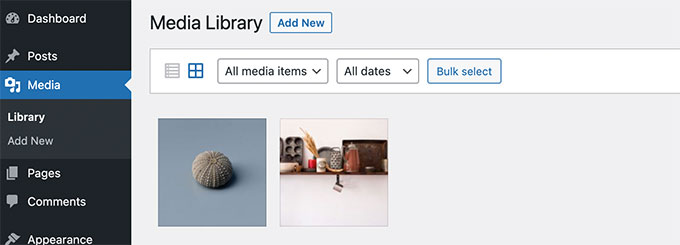
If some or all of your images failed to import, then you will need to import them again.
To do that, you first need to install and activate the Auto Upload Images plugin. For more details, see our step-by-step guide on how to install a WordPress plugin.
📝 Note: You might see that this plugin hasn’t been tested with the newest WordPress versions. Don’t worry – we’ve tried it out and it works well for importing your images.
If you want more info, check out our article about using untested WordPress plugins. And if you find a better plugin that does the same thing, please let us know in the comments!
Upon activation, you need to update the posts containing the external images. This update will trigger the plugin to fetch and store the external images in the article.
You can also bulk update all articles at once to quickly import all images. For detailed instructions, see our step-by-step tutorial on how to import external images in WordPress.
Step 4: Set Up Redirects for Medium Articles
If your Medium publication uses a medium.com URL, unfortunately, you can’t set up redirects.
But if you had a custom domain for your Medium publication, you can create custom redirects in WordPress.
To start, gather all the URLs of your Medium articles and save them in a text file. Next, you’ll need to set up redirects for each of these articles.
There are several ways to create redirects in WordPress. Check out our beginner’s guide to creating redirects in WordPress for step-by-step instructions.
Step 5: Decide What to Do With Your Medium Articles
Now, having the same articles on two different websites will affect their search engine optimization (SEO) since Google will consider them duplicate content. That means that your new WordPress site may not get any search engine traffic.
To avoid this, you can simply deactivate your Medium account. Deactivating an account keeps all your data on Medium, but it becomes publicly unavailable.
Simply click on your Profile icon under your Medium account and then select ‘Settings’.

From the settings page, scroll down.
Then, click on the ‘Deactivate account’ link at the bottom of the page.
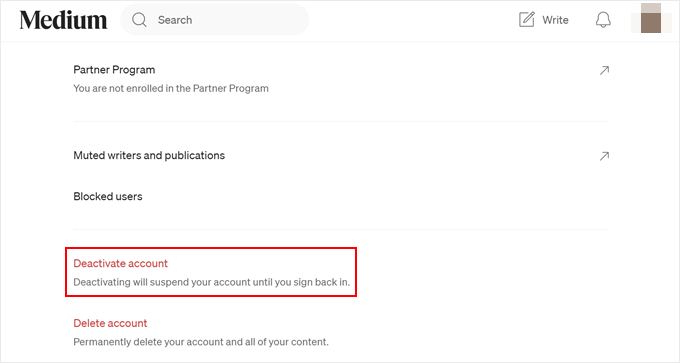
I’ve Imported My Medium Content to WordPress, Now What?
Whether you decide to embed your Medium posts or migrate your Medium content to WordPress, you still need to optimize your blog to set it up for success. Here are some tips for you to get started:
- How To Efficiently Manage Post Series in WordPress
- When Is the Best Time to Publish a Blog (+ How to Test It)
- How to Effectively Attract and Manage Guest Bloggers in WordPress
- How to Schedule Your Posts in WordPress (Step by Step)
We hope this article helped you learn how to embed Medium article posts on WordPress. You may also want to see our guide on how to write a great blog post in WordPress and our expert picks of the best WordPress blogs to read and follow.
If you liked this article, then please subscribe to our YouTube Channel for WordPress video tutorials. You can also find us on Twitter and Facebook.





Have a question or suggestion? Please leave a comment to start the discussion.